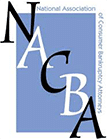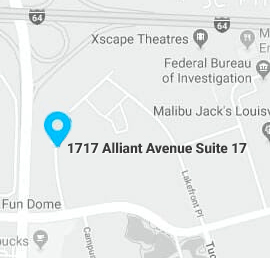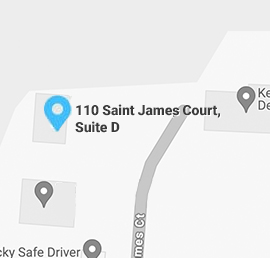Chapter 9 Bankruptcy in Louisville, KY

Chapter 9 Bankruptcy Cases in Kentucky
One of the most rare and unused bankruptcy chapters in the United States bankruptcy code is Chapter 9. In fact, there have been less than 700 Chapter 9 filings since the Great Depression era. But the Great Recession between 2007 and 2009 prompted several more Chapter 9 filings. Additionally, financial experts are predicting a surge of Chapter 9 bankruptcy filings due to financial strain caused by the COVID-19 pandemic. Municipal employees who are planning to file for Chapter 9 bankruptcy need experienced bankruptcy attorneys on their side. For more information, call us today at 502-339-0222.
NOTE: The attorneys at O’Bryan Law Offices currently handle Chapter 7 and Chapter 13 bankruptcy filings only. Although we do not handle Chapter 9 cases, this page exists for educational purposes.

What is Chapter 9 Bankruptcy?
Chapter 9 bankruptcy is the rarest type of bankruptcy. It’s also called municipal bankruptcy because it provides financial relief for municipalities. The American federal government divides each county into municipalities. There are four types of municipalities in the U.S., and they include:
- Cities
- Boroughs
- Townships
- Incorporated towns
Other municipalities that can declare bankruptcy include school districts, taxing districts, counties, highway authorities, and municipal utilities.
Chapter 9 Bankruptcy History
During the Great Depression, Congress passed the first municipal bankruptcy legislation. Despite Congress’ careful drafting of the legislation, the Supreme Court held that the 1934 legislation was illegal because it was an unconstitutional interference with state sovereignty. The Supreme Court later passed a Revised Municipal Bankruptcy Act which was approved by Congress in 1937. Since 1937, the law has been changed multiple times. As stated previously, there have been less than 700 municipal bankruptcy applications filed since the Great Depression era.
Chapter 9 Bankruptcy Eligibility Requirements
In order for a municipal debtor to file for Chapter 9 bankruptcy, it must:
- Have authorization to file a municipal bankruptcy case under state law
- Prove that it cannot pay its municipal debts without the help of a bankruptcy proceeding
- Show willingness to create a follow a bankruptcy plan in order to pay off its debts
- Try to create a settlement with specific creditors
If a Chapter 9 debtor meets these requirements, then they can file a bankruptcy petition that will go to its creditors and the bankruptcy court. This petition will then activate an automatic stay. This means that all creditors must stop all collection actions towards a municipal entity.
How Does Municipal Bankruptcy Work?
The goal of Chapter 9 is to safeguard a bankrupt municipality from its creditors while it prepares and negotiates a debt-reduction plan. Generally, municipal debtors can pay off their debts without selling assets. Debt reorganization for a municipal debtor can happen through:
- Prolonging the maturity of debt
- Lowering the amount of principal owed or the amount of interest owed
- Getting a loan in order to refinance the debt owed
Chapter 9 vs. Chapter 11 Bankruptcy
The main difference between these two chapters of bankruptcy is who is specifically authorized to file for them. Bankruptcy code requires businesses and individual people to utilize Chapter 11. Meanwhile, the bankruptcy code defines municipalities such as taxing districts, cities, and municipal utilities to file for Chapter 9.
It’s important to note that a bankruptcy court generally has much more power in Chapter 11 proceedings compared to Chapter 9. This is because municipalities are protected by the federal government, so bankruptcy courts are unable to make spending or other policy choices on their behalf. With a Chapter 9 debtor, the bankruptcy court can only approve the petition, confirm the plan, and ensure that it’s completed.
Chapter 9 vs. Chapter 13 Bankruptcy
A Chapter 13 bankruptcy is generally filed by individual people and households. However, it’s similar to Chapter 9 because the entire goal is to protect a municipality from creditors while it seeks financial relief. One of the main differences between Chapter 9 and Chapter 13 is that a bankruptcy court can’t force the municipality to sell its assets in order to pay off debt because this would violate the Tenth Amendment. But the municipality can choose to do this without court approval if it would satisfy its creditors. Lastly, a Chapter 9 debtor can certainly levy taxes, leverage real estate, and increase funds as it pleases. Chapter 13 debtors can’t do this because the bankruptcy court has more power and therefore makes most of the bankruptcy decisions.
Will More School Districts File for Chapter 9 Bankruptcy Due to COVID-19?
As stated previously, Chapter 9 bankruptcy is the most rare type of bankruptcy. What’s even more rare is school districts filing a bankruptcy case. Only two have done so successfully, and they include Cisco, TX school district in 1947 and San Jose, CA school district in 1983.
It’s possible that more school districts will declare bankruptcy in the future due to the financial hardship caused by the COVID-19 pandemic. The pandemic has already caused an exorbitant amount of business shutdowns, job layoffs, and a drop in manufacturing and building. All of these economic failures lower the income, property, and tax revenue that are necessary to pay schools. Schools may also face lawsuits in the future based on how poorly they handled things like social distancing, mask wearing, vaccinations, and more. Lawsuits are always expensive, and therefore could lead to more school bankruptcy proceedings than ever before.
Cities and Counties That Have Filed for Chapter 9 Bankruptcy Recently
The Great Recession that happened between 2007 and 2009 resulted in many municipal bankruptcy cases in the following years. The cities and counties who have declared bankruptcy the most recently include:
- 2007: Moffett, OK
- 2008: Gould, AR
- 2008: Vallejo, CA
- 2009: Prichard, AL
- 2010: Hamtramck, MI
- 2010: Washington Park, IL
- 2011: Jefferson County, AL
- 2011: Central Falls, RI
- 2011: Boise, ID
- 2011: Harrisburg, PA
- 2012: Stockton, CA
- 2012: Mammoth Lakes, CA
- 2012: San Bernardino County, CA
- 2013: Detroit, MI
- 2015: Hillview, KY
The Largest Municipal Bankruptcy in American History
The largest municipal bankruptcy in American history happened in Detroit, MI in July 2013. Debt obligations involved in the Detroit Chapter 9 bankruptcy ($18 billion) surpassed the municipal debts involved in the Jefferson County, AL bankruptcy ($4 billion) that happened in 2011. The Great Recession was the main cause of the Detroit bankruptcy, as well as a gradual population decline.
Detroit’s bankruptcy court approved the proposed debt adjustment plan established between the city and its creditors in November 2014. The approved plan decreased the overall municipal debt by $7 billion, owing to reductions in public employee pensions and lower bondholder recoveries. Also, the plan provided $1.7 billion over a 10-year period for crucial infrastructure projects. Lastly, the plan established new financial oversight mechanisms, which a panel of state officials supervised.
Chapter 9 Bankruptcy in Kentucky
The state of Kentucky has its own rules and history surrounding Chapter 9 bankruptcy.
Can Municipalities File Chapter 9 Bankruptcy Without Permission in Kentucky?
In some states, municipalities must have permission from its local government and bankruptcy court in order to file a bankruptcy petition. However, this isn’t the case in Kentucky. Since 1942, state laws specifically authorized all municipal debtors to file for Chapter 9 bankruptcy without any sort of permission. However, it’s important to note that Kentucky counties can only file once they receive local bankruptcy court approval regarding a debt adjustment plan.
Hillview, KY Bankruptcy
The first American city to file for Chapter 9 following the record breaking Detroit proceeding was Hillview, KY in August 2015. Hillview was and still is much smaller than Detroit, with a mere population of 8,000 people in 2015. Hillview’s debt obligations were also much less than Detroit, totaling less than $100 million. The single biggest debt was a $11.5 million court judgment stemming from a contract dispute between Hillview and Truck America Training LLC over the sale of a piece of property.
The municipal bankruptcy case ended 7 months later because Truck America reached a settlement in order to pay off its debts. Basically, the settlement required Hillview to initially pay $5 million and then continue paying 8.3% of its general fund income receipts to Truck America for the next 20 years. In order to raise additional funds, the city also promised to raise the rates of its occupational licensing fee and insurance premiums tax.
Adair County Hospital District Bankruptcy
Adair County Hospital District was another major municipality that filed a Chapter 9 bankruptcy petition with the Kentucky bankruptcy court. This happened shortly after the Jefferson County bankruptcy wrapped up, but received much less media attention. At the time of its filing in July 2013, this Kentucky municipality’s debts added up to $20 million.
Adair County Hospital District received bankruptcy court approval of its debt adjustment plan in January 2016. In order to gain control of its financial affairs, the debt adjustment plan required the Chapter 9 debtor to sell its assets to T.J. Regional Health Incorporated. In other words, T.J. Regional Health had to become the new hospital operator. Even though Adair County Hospital District stopped operating the hospital, the plan still required it to continue assessing and collecting real property taxes at the present rate. Then the Chapter 9 debtor had to utilize the receipts to repay debt owed.
Call O’Bryan Law Offices Today
O’Bryan Law Offices is a family-owned bankruptcy law firm with over 40 years of combined bankruptcy experience. We can walk all clients through the process of bankruptcy in Kentucky and southern Indiana. For more information on how we can specifically help you, call us today at 502-339-0222.






